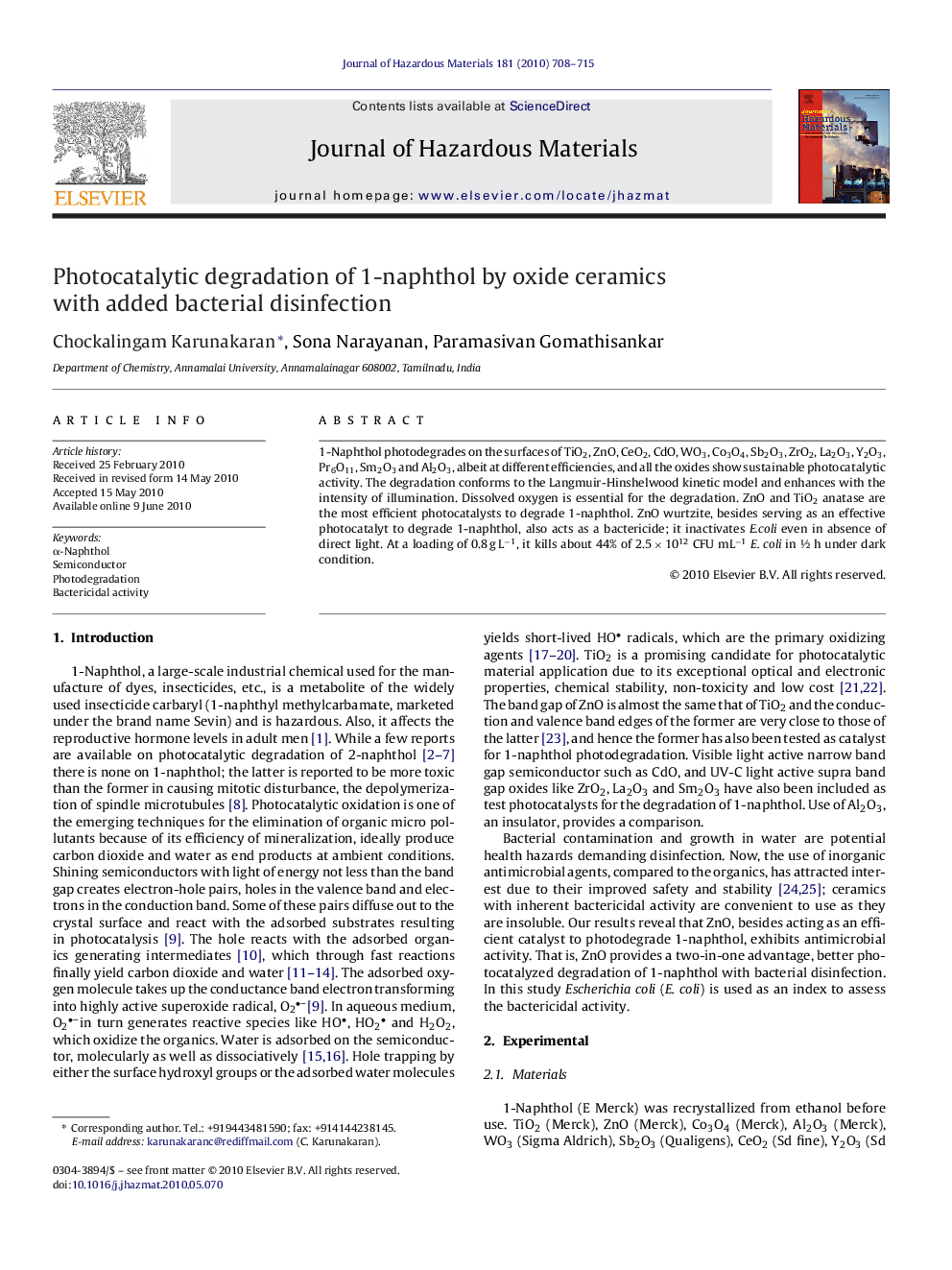| Article ID | Journal | Published Year | Pages | File Type |
|---|---|---|---|---|
| 580019 | Journal of Hazardous Materials | 2010 | 8 Pages |
Abstract
1-Naphthol photodegrades on the surfaces of TiO2, ZnO, CeO2, CdO, WO3, Co3O4, Sb2O3, ZrO2, La2O3, Y2O3, Pr6O11, Sm2O3 and Al2O3, albeit at different efficiencies, and all the oxides show sustainable photocatalytic activity. The degradation conforms to the Langmuir-Hinshelwood kinetic model and enhances with the intensity of illumination. Dissolved oxygen is essential for the degradation. ZnO and TiO2 anatase are the most efficient photocatalysts to degrade 1-naphthol. ZnO wurtzite, besides serving as an effective photocatalyt to degrade 1-naphthol, also acts as a bactericide; it inactivates E.coli even in absence of direct light. At a loading of 0.8 g Lâ1, it kills about 44% of 2.5 Ã 1012 CFU mLâ1E. coli in ½ h under dark condition.
Related Topics
Physical Sciences and Engineering
Chemical Engineering
Chemical Health and Safety
Authors
Chockalingam Karunakaran, Sona Narayanan, Paramasivan Gomathisankar,
